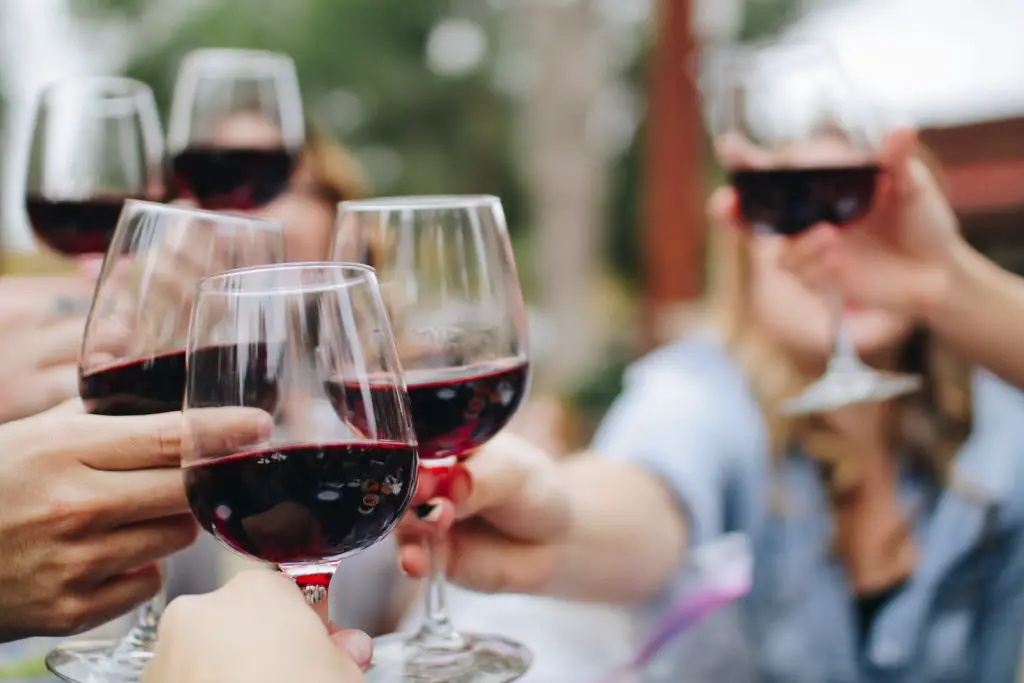
I actually got started in wine by hosting wine tastings at my home with a bunch of friends. None of us knew anything about wine, but we learned! And if I were to do it again, this is what I would do.
Hosting a wine tasting for beginners isn’t difficult. If your group knows absolutely nothing about wine, pick 1 Pinot Grigio, 1 Chardonnay, 1 Pinot Noir, 1 Zinfandel, and 1 Cabernet Sauvignon. It doesn’t matter where the wines come from. Spend between $8 – $15 USD per bottle. You can get 12 tastings per bottle, so this will work for up to 12 people.
Let’s get into the details of how to host a wine tasting for beginners.
- Why Hosting a Wine Tasting Is the Best Way to Learn about Wine
- How to Select the Wines for a Home Wine Tasting for Beginners
- Sample Wine Tasting Ideas for a Home Wine Tasting for Beginners
- How to Set Up a Home Wine Tasting
- How to Serve Wine at a Home Wine Tasting
- What Foods to Serve at a Home Wine Tasting
- Foods to Serve with Wine Tasting at Home
- Do You Have to Take Tasting Notes? If So, How?
- What Do You Do with Leftover Wine?
- Thirsty for More?
Why Hosting a Wine Tasting Is the Best Way to Learn about Wine

Probably the most intimidating thing about getting started with wine is that you have absolutely no idea what’s inside each bottle. You’ve figured out that all of the different grape names mean the wines will taste different, but you haven’t had enough wine to really crack the code – you can’t pick up a bottle and know exactly what you’re getting.
Good news!
The more wines you try, the better you’ll get at figuring out what you like and dislike.
Hosting a wine tasting at home is the best way to learn about wine. Why?
Because:
- A) it’s cheaper than buying wines at a restaurant or going out for wine tastings, and
- B) you get to talk about the wines with your friends in an informal setting. No one’s judging you! Spend as much time as you like sniffing each wine. Dump what you hate into the kitchen sink. Even pour seconds if you like it… and if it’s really good – maybe even go for a full glass!
How to Select the Wines for a Home Wine Tasting for Beginners

Rule 1: Don’t worry about finding a certain wine label or brand.
The best wines for your beginners’ wine tasting will be wines that you can find in the grocery store or wherever you typically buy wines where you live – maybe a government liquor store or local bottle shop.
Distributing wine is a hot mess of government regulations. The crazy thing about wine is that what I can buy in my store will be different than what you can find wherever you live, so don’t worry about labels or brands.
The whole point of hosting a wine tasting for beginners is to help you all learn about wine.
The only way to learn about what wines you like and dislike is through experience – the more wine you drink, the more you’ll figure that out.
Because your group is at the beginner level, go for a range of everyday wines.
Helpful Tip: If you’re just getting started, head over to this post that covers the primary winegrowing regions around the world and their main grapes.
It’s silly to try to find that exact wine that someone recommends if they don’t live in your neighborhood or in your city.
Don’t waste your time trying to find a specific wine. Here’s what you need to host a wine tasting for beginners.
What Wines to Buy for a Beginners Home Wine Tasting: Focus on Price
Believe it or not, price is going to be the most important factor when you choose your home wine tasting bottles. You don’t need to ask a wineshop clerk for recommendations – beginning wine tasters can’t distinguish between the nuances of higher-priced bottles, so why spend the money?
If you’re in a different country outside of the United States, look for wines priced right above the least expensive, entry-level bottles.
How Much Should You Pay for Wine for a Home Wine Tasting?
Choose wine bottles between $8USD – $15USD.
Why? Wine made at this price point will be well-made technically and without flaws. Wines at this price will also express the classic characteristics of the grape variety.
So a Chardonnay at this price will taste like a typical Chardonnay.
A Cabernet Sauvignon will taste like a classic Cab.
Easy!
What Wines Should You Buy for a Beginner Wine Tasting?
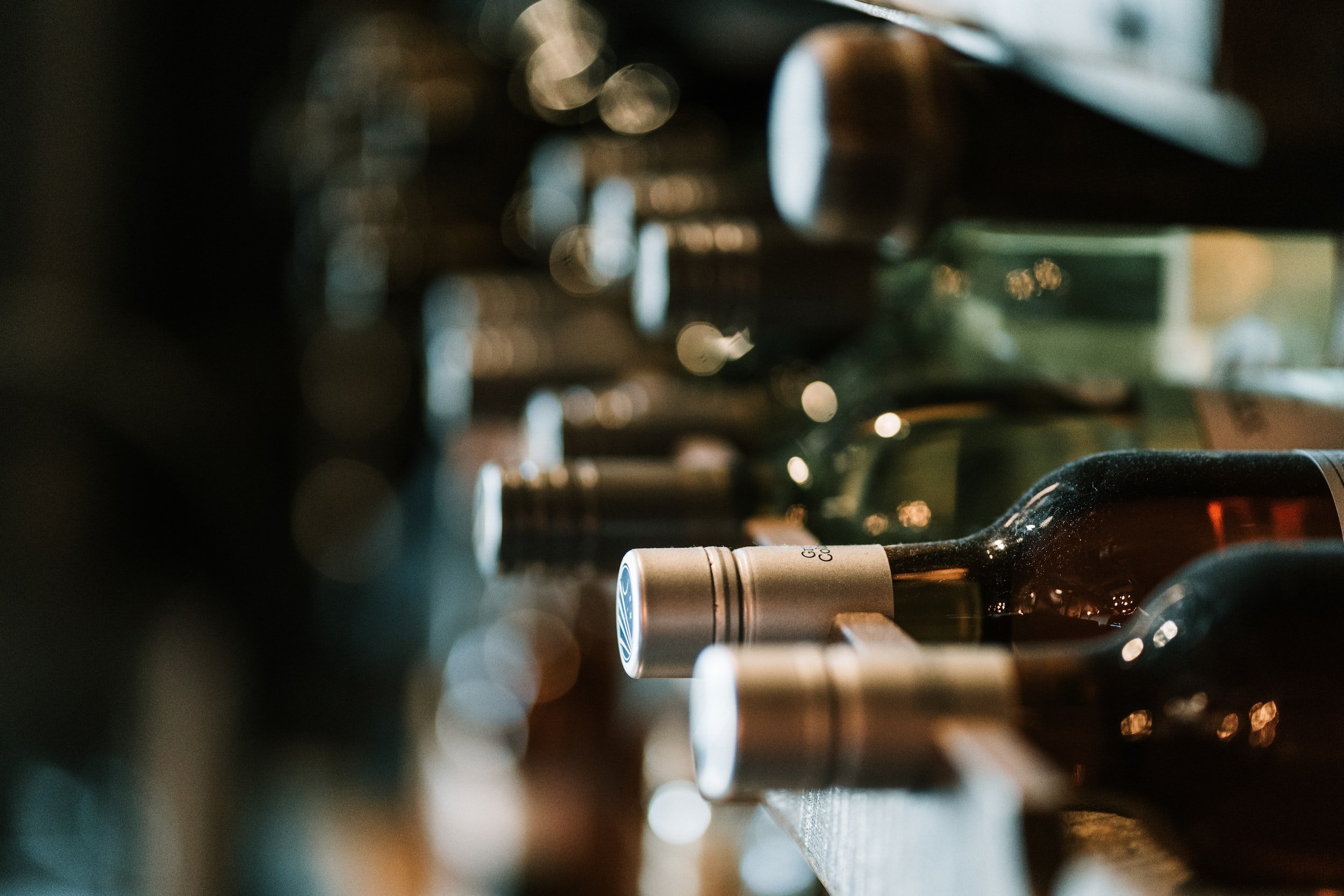
The goal of hosting a wine tasting for new wine drinkers is to learn about wines (okay – and do a little social drinking, too!). So it’s easier to start with…
What Wines NOT to Buy
- Mystery grapes. Don’t buy wine from grapes no one’s heard of – Txakolina anyone? I love these wines. They’re treasures. But they won’t help you learn about wine as a newbie.
- Don’t buy blends. Stay away from things like ‘Red Table Wine’ or ‘Red Blend’ or any label that doesn’t list the grape on it (sorry, France). Why? Because you want to learn what the different grapes taste like so that you can figure out what you like and dislike. Every grape has a general profile. That’s what you want to learn to taste. Blends are a mix of grapes and one winery’s red blend will never taste like another winery’s red blend. This is unhelpful for beginner wine tasters.
- Don’t buy expensive wines. Don’t spend $50+ USD on wines. Save your wine budget for later when you’ve really figured out what wine styles you like, THEN you can taste up the price ladder. In fact, I encourage it!
Helpful Tip: Go check out this post on how to find affordable wines for beginners (I put this together just for you if you’re getting started.)
Sample Wine Tasting Ideas for a Home Wine Tasting for Beginners
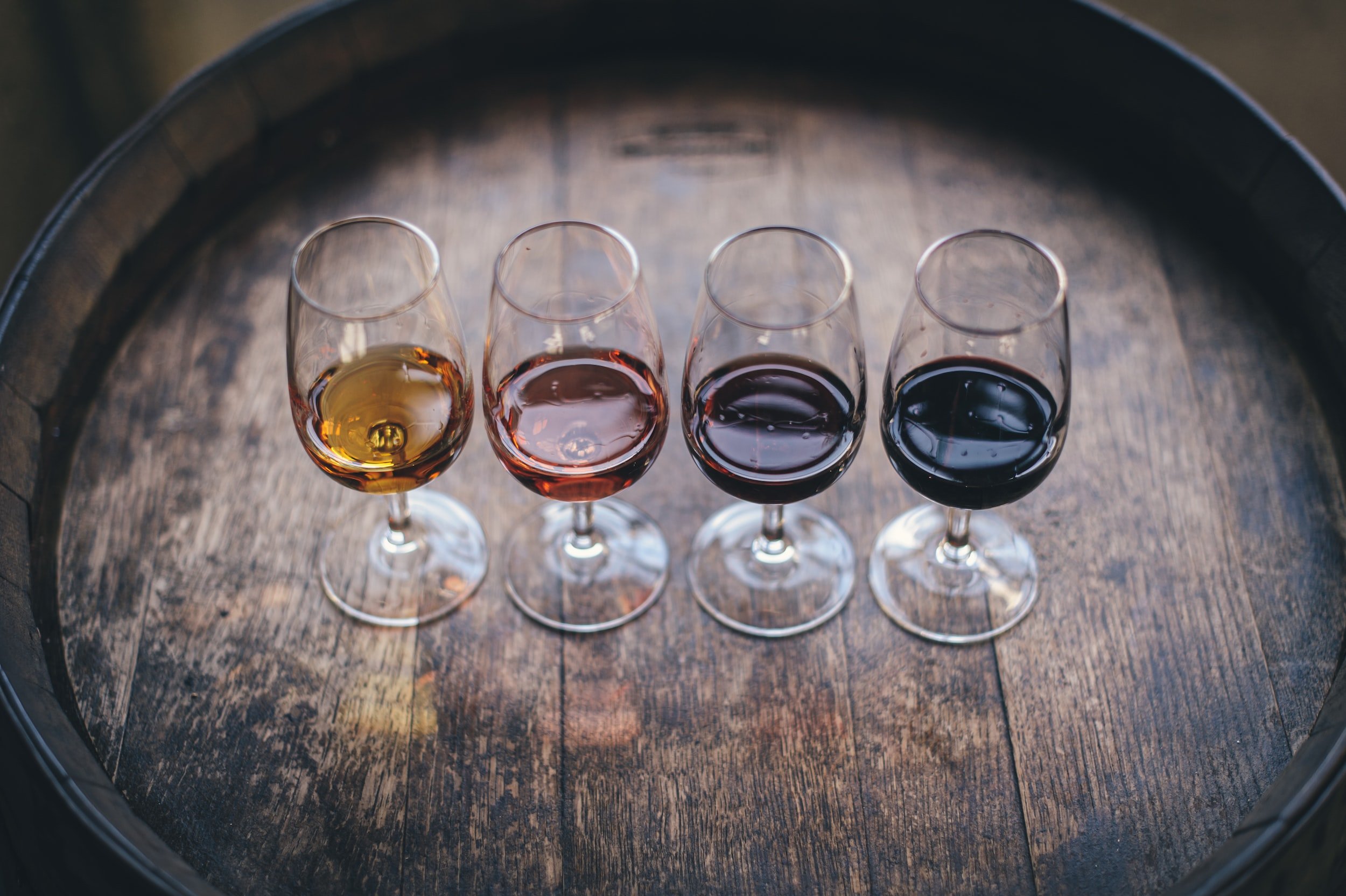
You can set up your tasting in a few different ways. Because the goal is to learn about wine, you want the classics.
Jargon Alert: A wine ‘flight’ is a lineup of different wines for wine tasting. Usually these are small pours, around 2 oz and the flight is usually has between 3-6 wines.
Depending on the number of people tasting and your wine budget, you may want to start with more bottles or fewer bottles of wine.
Below you’ll find 6 different sets of tasting flights to choose from: 5 and 3 bottle mixed flights; 5 and 3 bottle red wine flights; and 5 and 3 bottle white wine flights.
Here are good wine flights for hosting a beginner’s wine tasting at home.
Mixed Tasting Flights – 5 Bottles
A mixed flight is a wine tasting that includes both white and red wines. Here are 5 fun mixed wine tasting flights for absolute beginners:
- 1 Pinot Grigio, 1 Sauvignon Blanc, 1 Rosé (any), 1 Merlot, 1 Cabernet Sauvignon
- 1 Pinot Grigio, 1 Chardonnay, 1 Pinot Noir, 1 Zinfandel, 1 Cabernet Sauvignon
- 1 Riesling (dry)*, 1 Sauvignon Blanc, 1 Pinot Noir, 1 Merlot, 1 Cabernet Sauvignon
- 1 Riesling (dry), 1 Chardonnay, 1 Rosé (any), 1 Pinot Noir, 1 Grenache/Garnacha
- 1 Sauvignon Blanc, 1 Chardonnay, 1 Pinot Noir, 1 Malbec, 1 Cabernet Sauvignon
*Tip: Learn how to select a dry Riesling here.
Mixed Tasting Flights – 3 Bottles
- 1 Chardonnay, 1 Pinot Noir, 1 Cabernet Sauvignon
- 1 Sauvignon Blanc, 1 Chardonnay, 1 Merlot
- 1 Chardonnay, 1 Rosé (any), 1 Cabernet Sauvignon
- 1 Riesling (dry), 1 Pinot Noir, 1 Zinfandel
- 1 Riesling (dry), 1 Chardonnay, 1 Pinot Noir
White Wine Tasting Flights – 5 Bottles
- 1 Riesling (dry), 1 Pinot Grigio, 1 Semillon, 1 Sauvignon Blanc, 1 Chardonnay
- 1 Riesling (dry), 1 Pinot Grigio, 2 Sauvignon Blancs from different parts of the world, 1 Chardonnay
- 1 Riesling (dry), 1 Pinot Grigio, 1 Sauvignon Blanc, 2 Chardonnays from different producers
White Tasting Flights – 3 Bottles
- 1 Pinot Grigio, 1 Sauvignon Blanc, 1 Chardonnay
- 1 Riesling, 1 Sauvignon Blanc, 1 Chardonnay
- 1 Riesling, 1 Pinot Grigio, 1 Sauvignon Blanc
Red Wine Tasting Flights – 5 Bottles
- 1 Pinot Noir, 1 Grenache/Garnacha, 1 Zinfandel/Primitivo, 1 Merlot, 1 Cabernet Sauvignon
- 1 Pinot Noir, 1 Grenache/Garnacha, 1 Gamay, 1 Merlot, 1 Cabernet Sauvignon
- 1 Pinot Noir, 1 Gamay, 1 Malbec, 1 Zinfandel/Primitivo, 1 Syrah/Shiraz
- 1 Pinot Noir, 1 Merlot, 1 Malbec, 1 Carmenere, 1 Cabernet Sauvignon
- 1 Pinot Noir, 1 Sangiovese/Chianti, 1 Merlot, 1 Syrah/Shiraz, 1 Cabernet Sauvignon
- 1 Sangiovese/Chiante, 1 Tempranillo/Rioja, 1 Merlot, 1 Cabernet Sauvignon
Red Tasting Flights – 3 Bottles – Just the Basics!
- 1 Pinot Noir, 1 Merlot, 1 Cabernet Sauvignon
- 1 Grenache/Garnacha, 1 Merlot, 1 Cabernet Sauvignon
- 1 Pinot Noir, 1 Zinfandel/Primitivo, 1 Cabernet Sauvignon
- 1 Zinfandel/Primitivo, 1 Merlot, 1 Cabernet Sauvignon
How to Set Up a Home Wine Tasting
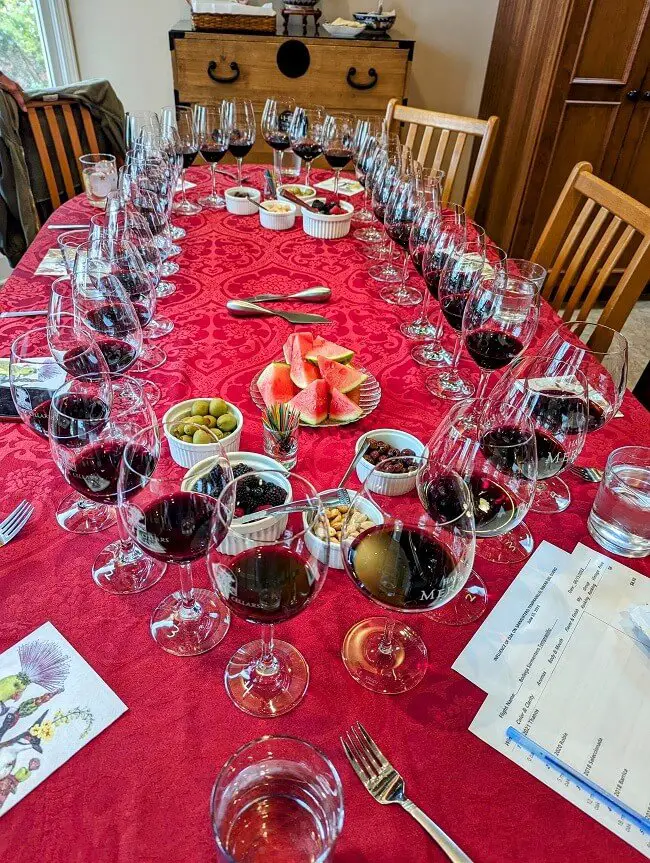
Rule 2: Always taste the wines from lightest to heaviest and from whites to reds.
It’s like drinking orange juice before brushing your teeth instead of after. Each wine has distinct chemistry and tasting the wines out of order can make them seem unbalanced when you try them.
So, if you’re using one of the flights above, taste the wines in the order they’re listed.
- Pinot Grigio comes before Chardonnay
- Pinot Noir comes before Zinfandel or Cabernet Sauvignon
99% of the time this will work for the wine flights listed. Boom!
Tip 1: If you go off script and decide to include a sparkling wine, always start with the sparkling wine.
Tip 2: If you really get adventurous and go for a Port, dessert (sweet), or fortified wine, always finish last with that wine.
Helpful Tip: I put together this comprehensive list of what order to taste wines in just for you.
How to Serve Wine at a Home Wine Tasting
You’re going to need to think about:
- Wine Glasses
- Wine Spit Cups
- Water
- Snacks
- Notes
- Leftovers
Where to Get All the Wine Glasses?
Logistics can be an issue with home wine tasting. Good news! You don’t need 100 wine glasses to host a wine tasting at home.
If each person has 1 wine glass, you can make this work.
In a pinch, you can use other types of glasses (I’ve had wine out of coffee mugs and sippy cups), but wine glasses have a curved bowl that will help the wine’s aromas bounce back up and hit your nose – letting your roll around in a delicious bouquet of aromas.
So, at a minimum, every guest needs 1 wine glass.
If you have enough wine glasses so that every person has 2 glasses to do side-by-side comparisons, this is better.
And if you have enough wine glasses so that every person can have one wine glass for each wine you’re pouring, then you’ll be drinking like champs!
Because you’re all new and no one has invested lots of money into wine (yet), the host can request that the guests bring any wine glasses they have with them to support the event. BYOGs!
Spit Happens: Have Something to Spit Into…
Give people spit cups. You will have wines that people love to drink, and wines that everyone pours out. Spit happens. Give your guests a coffee mug or paper cup to spit nasty wine in.
Don’t use clear glasses for spit cups. Spit is gross to look at.
What Temperature to Serve the Wines at a Home Wine Tasting?
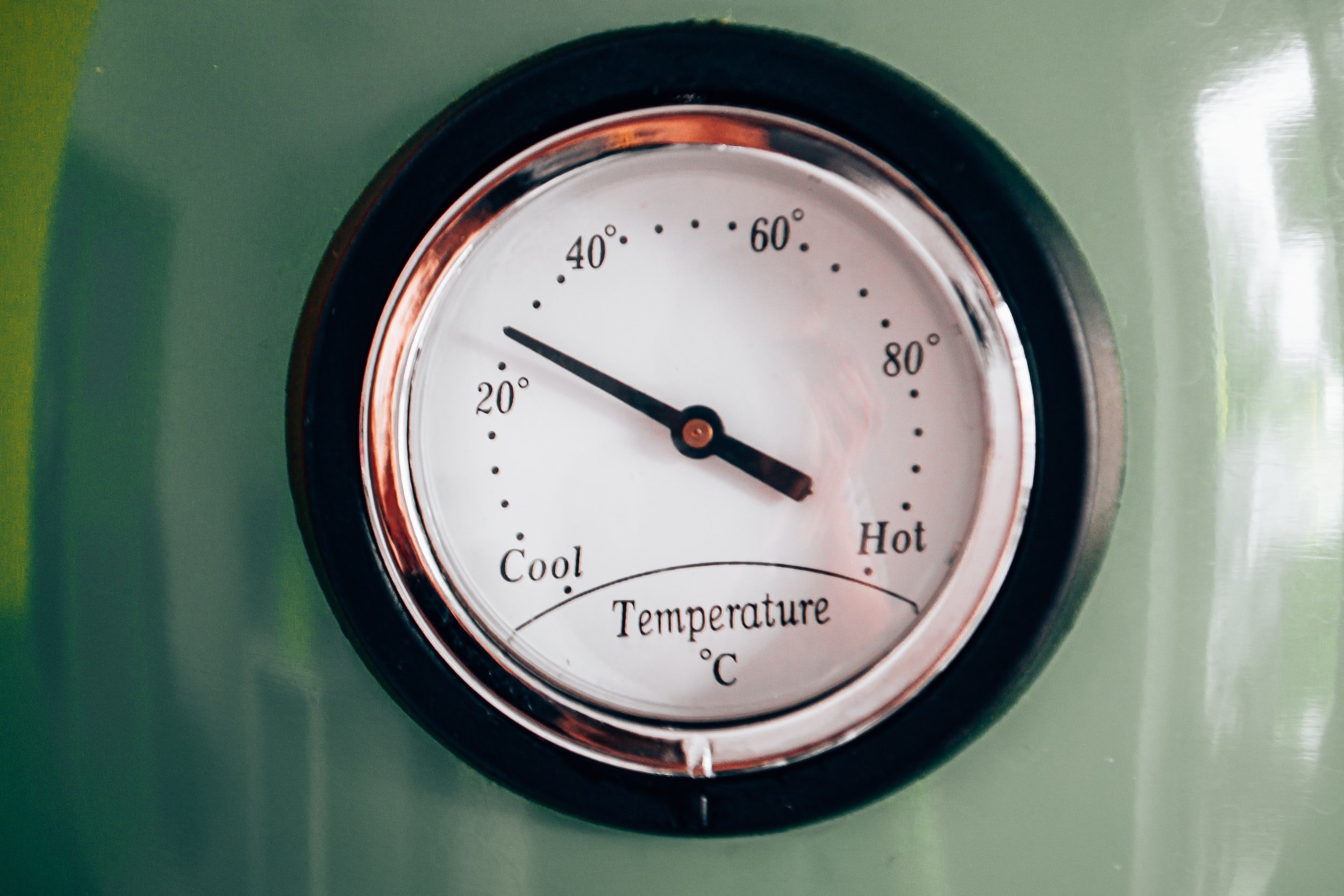
I’m of the opinion that the simpler and less fussy the better, especially when it comes to enjoying wine. People spend a lot of time thinking about the ‘ideal’ serving temperature for a wine – like down to the degree. Come on, people! Let’s get real here.
Fun wine fact: When pros taste wine, they almost always taste it at room temperature, even white wines. Why? Because wines are more aromatic when they’re warmer. The aroma molecules bounce around less in cold wine, making them seem closed up.
BUT – the whole point of hosting a home wine tasting for beginners is to learn about wine so that you can go out into the real world of wine and restaurants with wine lists, and you know what to expect.
In the real world, white wines are always served chilled and most red wines are served around room temperature.
For your home wine tasting event:
- Chill white wines in the fridge overnight (or for several hours), and take white wines out of the fridge 15-20 minutes before pouring.
- Pour red wines at room temperature.
How Much Wine to Pour at a Home Wine Tasting?
When you go wine tasting, the tasting room associate will pour you 2 oz of wine.
You can get around 12 tastings in 1 bottle of wine.
A typical glass of wine is a 4-5 oz pour.
So you’ll be pouring a little under half of a glass of wine for each person. If you want to get fancy, you can get the bottle inserts that measure out pours.
These measured bottle pourers are entertaining, make the event seem official, and have the added bonus of chatting to you with those funny little gurgling noises – here are the ones I own:
Automatic Measured Bottle Pourer – Quick Shot Spirit Measure Pourer Drinks Wine Cocktail Dispenser Home Bar Tools – 1oz/30ml (4 pack)Buy on Amazon
If you use the automatic bottle pourers like the ones above, then each pour is 1 oz, so two tips of the bottle will give you a 2 oz tasting. Easy!
What Foods to Serve at a Home Wine Tasting
Rule 3: Everyone Needs Water

Not so much a food, but unarguably the essence of life – have water available! When I know I’m going to be doing a wine tasting, I start hydrating early in the day. Then I drink water throughout the tasting.
Wine dehydrates.
It’s an excellent idea to provide LOTS of water for your beginner’s home wine tasting event.
Foods to Serve with Wine Tasting at Home
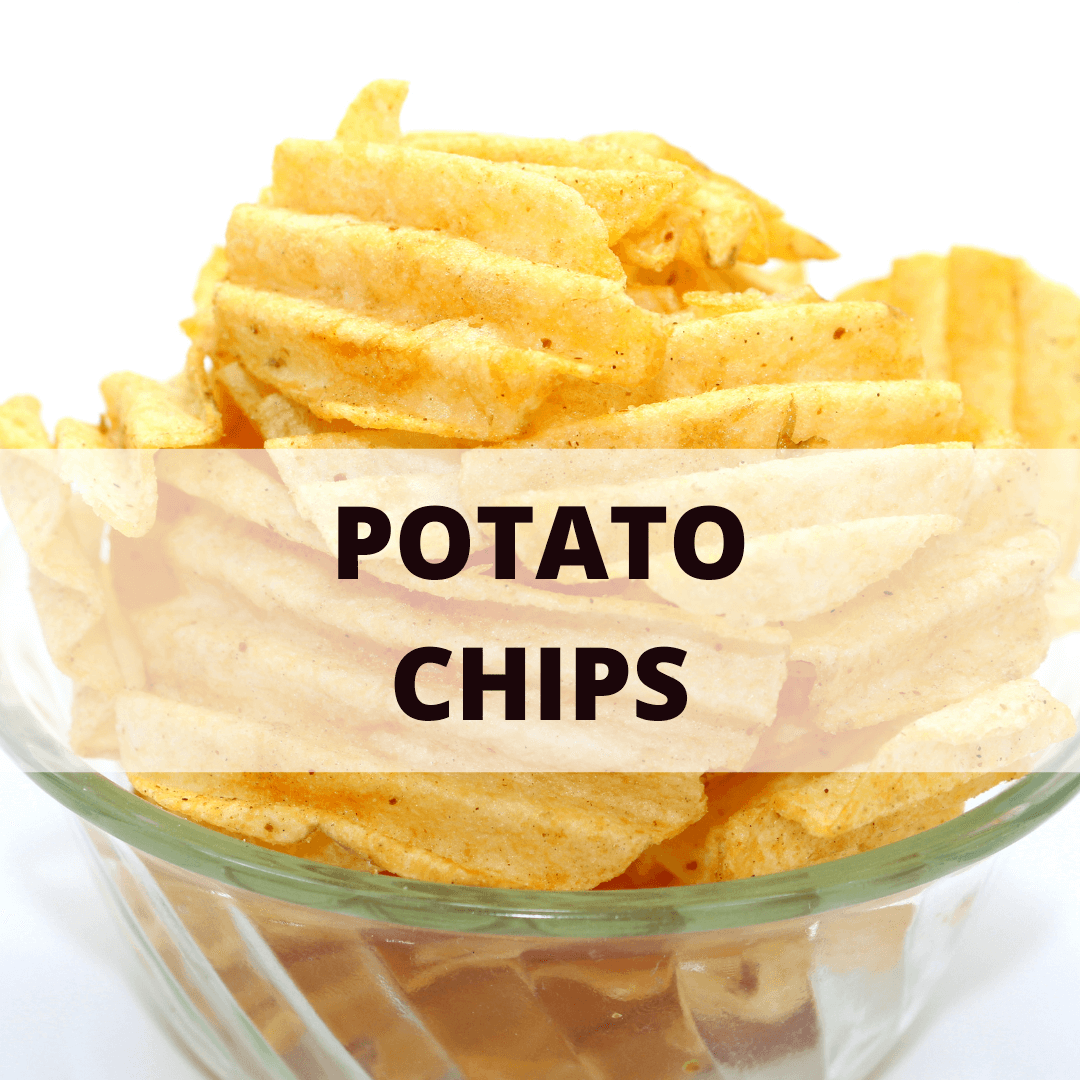
The great thing about DIY home wine tastings is that the star of the event is the wine, not the food, so don’t worry about extravagant pinchos or showing off your cooking flair.
Neutral salty snacks are the best foods for a home wine tasting party.
If you’ve gone to an actual wine tasting bar before, you’ve likely seen water crackers served.
These salty foods help clean your palate and salt softens the acid in wine.
If you’re tasting red wines, then the amino acids in fatty foods – like cheese and cured meats or black olives – help neutralize the tannin in the wine, relieving your tongue from the drying sensation that comes from red wines.
List of Wine Tasting Foods that Always Work
- Classic potato chips
- Crackers
- Almonds or other salted nuts
- Hard cheeses
- Cold cuts
- Salami
- French bread and olive oil
DON’T SERVE These Foods at a Wine Tasting
- Spicey snacks (chili heat or pepper)
- Garlic snacks
- Flavored chips
- Flavored crackers
- Fruit (grapes/apples)
- Chocolate
These foods, while common at fancy restaurants and charcuterie boards with wine tasting parties, have different flavor qualities that will interfere with your perceptions of the wine.
Save them for another tasting event.
Helpful Tip: If you’re just getting started out with wine, I put together this helpful overview of food with wine pairing to get you started. Side note – I spend just as much time thinking about food with wine pairing as I do deciding what I’m going to eat every night. Utter hedonism. What can I say?
Do You Have to Take Tasting Notes? If So, How?
If you’re a group of absolute newbies, the honest-to-gosh truth is no, you probably don’t want to bother taking tasting notes.
The only thing that’s important at this stage of your wine tasting game is to figure out that the bottles in front of you taste differently, and which ones you like better than others.
However, if you’re a little nerdy like me, then you can sign up for my periodic newsletter and download your very own wine tasting grid to host your next tasting night – check it out here!
The tasting grid is intuitive and designed for new wine drinkers.
Boom! Done!
What Do You Do with Leftover Wine?
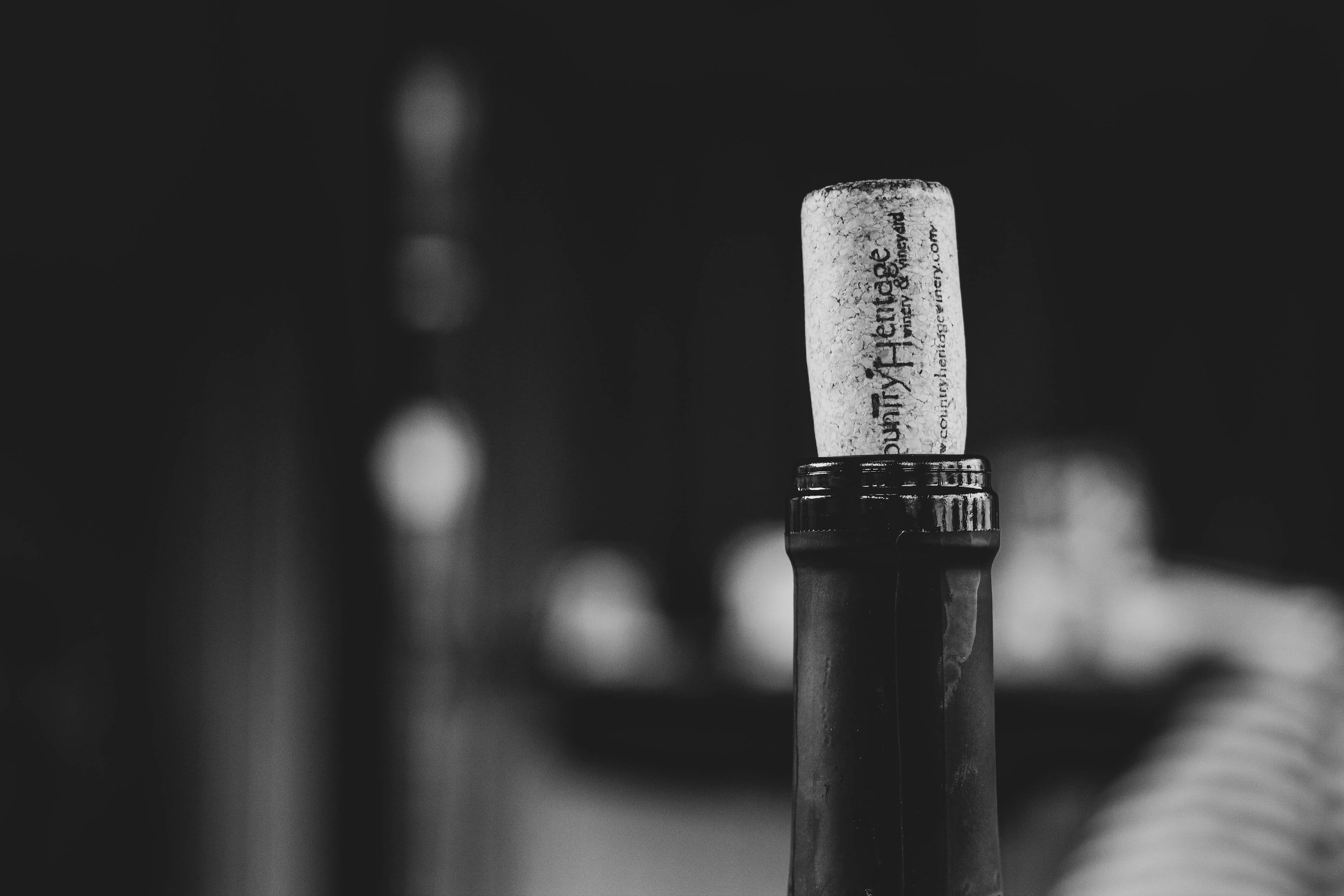
Rule 4: Don’t Try to Drink All of the Wine
Okay, maybe if you had 12 people over for the event and only 3 bottles, you’ll be able to get through them all. But it’s more likely that you’ll have lots of leftover wine.
The crowd favorite will be gone by the end of the evening, but expect several half bottles left over.
What to do with leftover wine – 2 options:
- If the wine’s a dud and just not very drinkable, pour it down the sink or freeze leftovers for soups and gravies (if you’re into cooking).
- If the wine’s decent, pop the cork back in and stick it in the fridge (reds and whites!). It will last for about 3 days. After day 3, it will lose its freshness and you’ll probably want to toss it.
- Send excess bottles home with your guests and share the bounty of the harvest!
Have a blast!
Thirsty for More?
The best way to learn about wines is through side-by-side comparisons with wine flights. I highly suggest DIY wine flights. Check out this post I put together to get you started with wine flights.
Aaaand… Here’s a post that I put together with wine tasting essentials. Things that I use every day in my wine life. Check it out!




